This week we continue our Artists in the AAS Archive series. This installment offers a spotlight on four more past fellows: book artist Maureen Cummins; performer-scholar Anne Harley; playwright and screenwriter Jeffrey Hatcher; and playwright and performer Laurie McCants.
This series celebrates the 25th anniversary of Artist fellowships at the American Antiquarian Society. More information about these programs may be found at the following: https://www.americanantiquarian.org/artistfellowships.
Maureen Cummins
Anthro(A)pology
The month that I spent at AAS came at a pivotal time in my career as an artist. When I arrived at AAS, I was in my early thirties and experimenting with altering pages of books that I found in antique shops, flea markets, and dumpsters. Being allowed into the treasure trove that AAS represented was, for me, a nerd’s dream come true. Naturally, though, it was not an option to overprint, burn, or alter the precious books that I handled in the reading room, so being in residence pushed me to think about new ways to work with historical imagery and text. Ultimately, I ended up finding ways to reproduce the materials I found, which also led to editioning and making more books for a larger collector base. Since that original visit in 2001, I have returned to AAS repeatedly, and created three more projects based on the collections.
One object that influenced an entire project was a mezzotint print of a Native American skull with a bullet through it. The image was from Samuel Morton’s infamous book, Crania Americana, a racist, faux-scientific text which set out to prove the “inferiority” of Native peoples. The prints in the book were so fine and exquisite, so lovingly created and beautifully crafted, that when I learned what the book was about, it disturbed me for days. I wanted to apologize for what this man had done. A title came to me, spontaneously: Anthro(A)pology.I spent the next ten years gathering similar racist images from historical text books, many of which I also found at AAS, in geography books and primers for children, but it was that haunting Morton image that originally got me thinking, and feeling.
Other excerpts of the works Divide and Suffering by Cummins:
Maureen Cummins was born in 1963 and is a native New Yorker. She graduated with a BFA from the Cooper Union School of Art, where she studied printmaking and book arts. In 1993, following a series of apprenticeships with master printers and binders in New York and California, Cummins established her own printshop/studio in a nineteenth-century packing box factory in Brooklyn.
Since that time, she has produced over twenty-five limited-edition artist’s books. Her work is held in over one hundred permanent public collections internationally and has been included in exhibitions at the American Craft Museum, the Zimmerli Art Museum, the Rotunda Gallery, the Corcoran Gallery of Art, the Art Complex Museum, and the Brooklyn Museum. Cummins has received over a dozen grants and awards and has been an artist-in-residence at numerous venues, including the American Antiquarian Society and the Irish Museum of Modern Art.
Website: http://www.maureencummins.com/
Anne Harley
Anne Harley received a Fellowship for Creative and Performing Artists and Writers at the American Antiquarian Society in 2012. The sound clips presented below are of Harley singing “The Morning is Up” and “Hail Columbia.” She is accompanied by Olav Chris Henriksen on guitar and Na’ama Lion on flute, both playing historic period instruments. These songs were recorded in Antiquarian Hall in May of 2015.
All three performers also presented a public concert entitled “‘Mild Melodious Maze’: Songs and Instrumental Music from Early America (1770-1830)” on Thursday, May 21, 2015, as part of the Society’s series of free public programs. This musical program celebrated some of the over 70,000 musical scores in the Society’s collections of American music and featured political songs of the Early Republic, shape note and Shaker tunes, popular hits from imported English stage shows, and the strains of the first art music composed on American soil.
 Anne Harley is a prize-winning Canadian performer-scholar, director and educator based in Claremont, CA. She specializes in performing and recording music from challenging and groundbreaking contemporary composers, as well as researching and recording music from early oral and written traditions in Europe, North America and Russia. Her solo performances are available on Hänssler Profil, Naxos, Sony Classics, Canteloupe, Musica Omnia, einKlang and BMOP/sound, among others.
Anne Harley is a prize-winning Canadian performer-scholar, director and educator based in Claremont, CA. She specializes in performing and recording music from challenging and groundbreaking contemporary composers, as well as researching and recording music from early oral and written traditions in Europe, North America and Russia. Her solo performances are available on Hänssler Profil, Naxos, Sony Classics, Canteloupe, Musica Omnia, einKlang and BMOP/sound, among others.
Harley is recognized internationally as a specialist in contemporary classical music and extended voice techniques. Over the course of the last two decades, she has premiered, performed and recorded works by contemporary composers Evan Ziporyn, John Adams, Ralf Gawlick, Lee Hoiby, Louis Andriessen, Peter Eotvös and John Harbison, Jodi Goble, Christine Southworth, Moshe Shulman, Yii Kah Hoe and Chaipruck Mekara, among others. In 2012, she founded the new music project Voices Of The Pearl, which transmits, in newly commissioned song cycles, texts by and about female spiritual practitioners from all world traditions. She also performs internationally in the area of historically informed performance, in medieval, baroque, early American, early Russian and Russian Roma music. She leads the pioneering early Russian music ensemble, TALISMAN with Dr. Oleg Timofeyev.
Since 2009, she is on faculty at Scripps College (Claremont, CA), teaching voice, music history and interdisciplinary humanities and in 2015, became Chair of the Music Department.
Website: http://www.anneharley.com/
Jeffrey Hatcher
I came to the American Antiquarian Society in the Fall of 1995 to research and write a play called Sockdology about the actors who were in Our American Cousin the night Abraham Lincoln was assassinated at Ford’s Theater. I didn’t know quite what to expect when I arrived, what the AAS routines and rhythms would be. Most of the other fellows were engaged in research of a more traditional kind, or at least for more traditional kinds of projects: books, studies, etc.
 As an artist fellow, there was something exotic about my presence, although I find nothing exotic about a playwright writing for the theater. Within days the rhythm of the place had asserted itself: coming in at 9:00, putting one’s things in the locker, the soft pencil and paper, the requests made on cards. There was information to be had, but some of the richest discoveries were in the realm of the atmospheric: programs, posters, the kind of typeface and coloring used in playbills and flyers; the ways in which actors, composers, and yes, playwrights, presented themselves in the 19th century.
As an artist fellow, there was something exotic about my presence, although I find nothing exotic about a playwright writing for the theater. Within days the rhythm of the place had asserted itself: coming in at 9:00, putting one’s things in the locker, the soft pencil and paper, the requests made on cards. There was information to be had, but some of the richest discoveries were in the realm of the atmospheric: programs, posters, the kind of typeface and coloring used in playbills and flyers; the ways in which actors, composers, and yes, playwrights, presented themselves in the 19th century.
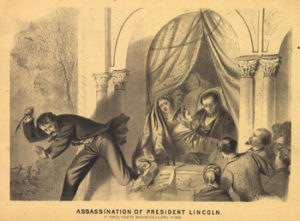 Writers look for dates, facts, quotes, all vitally important, especially when working on a piece of dramatic invention based on fact. But there is as much or more inspiration in a handbill advertising a final performance or an advertisement using the image of an actor to sell a product. All this: the style of the time, its flair, its excesses and demurrals, make up the soil and seed from which a book, a play, a poem, a film script, may grow. I loved my month in Worcester at the American Antiquarian Society. Would that I could do it again.
Writers look for dates, facts, quotes, all vitally important, especially when working on a piece of dramatic invention based on fact. But there is as much or more inspiration in a handbill advertising a final performance or an advertisement using the image of an actor to sell a product. All this: the style of the time, its flair, its excesses and demurrals, make up the soil and seed from which a book, a play, a poem, a film script, may grow. I loved my month in Worcester at the American Antiquarian Society. Would that I could do it again.
Jeffrey Hatcher is an American playwright and screenwriter. He wrote the stage play Compleat Female Stage Beauty, which he later adapted into a screenplay, shortened to just Stage Beauty (2004). He also co-wrote the stage adaptation of Tuesdays with Morrie with author Mitch Albom, and Three Viewings, a comedy consisting of three monologues—each of which takes place in a funeral home. He wrote the screenplay Casanova for director Lasse Hallström, as well as the screenplay for The Duchess (2008), Mr. Holmes (2015), and The Good Liar (2019). He has also written for the Peter Falk TV series Columbo, The Mentalist and E! Entertainment Television. Hatcher was a 1995 Wallace Fellow at AAS.
Laurie McCants
My performance-in-progress is based on the story of Frances Slocum, a 5-year-old Quaker girl, kidnapped in 1778 by the Lenape, married into the Miami in 1795, and in 1837, reunited with her Slocum siblings, who found her in Indiana, the revered widow of a chief. They entreated her to return to Pennsylvania and “civilization.” She refused, living out the rest of her life with her people.
Her story was popularized through epic poems, ballads, family memoirs, historical studies, children’s books, melodramas, and public pageants. At AAS, I focused on what I could learn about the true story of Frances Slocum/Mahkoonsahkwa (her Miami name) and what the many tellings of that story over many decades reveal about how we Americans tell stories about ourselves.
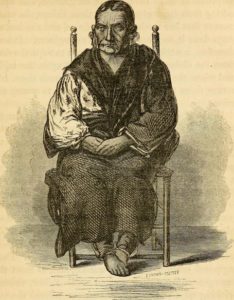 My research revealed that the story has been mostly told through the “white” lens, which dominates the historical, literary, and pop culture archives. The story Frances actually told her relatives was one of kindness from her captors and eventual prosperity as a tribal elder. And yet a book about this mostly happy tale, written in 1906 by one of her Slocum descendants, is titled HISTORY OF FRANCES SLOCUM, THE CAPTIVE: A Civilized Heredity Vs; A Savage, and Later Barbarous, Environment. I learned a useful phrase from my fellow Fellow Elspeth Martini:
My research revealed that the story has been mostly told through the “white” lens, which dominates the historical, literary, and pop culture archives. The story Frances actually told her relatives was one of kindness from her captors and eventual prosperity as a tribal elder. And yet a book about this mostly happy tale, written in 1906 by one of her Slocum descendants, is titled HISTORY OF FRANCES SLOCUM, THE CAPTIVE: A Civilized Heredity Vs; A Savage, and Later Barbarous, Environment. I learned a useful phrase from my fellow Fellow Elspeth Martini:
“Empirical evidence never dislodges his imperialistic views.”
At first, I felt (foolishly) intimidated by the scholars in the reading room, but that quickly vanished when they invited me to join them for their weekly RuPaul’s Drag Race watch party. My time at AAS was greatly enriched by my conversations/breaking bread/sharing drinks/telling stories with my fellow Fellows.
I sort my research into the Pot of Troubles and the Pot of Possibilities. The Frances Slocum story proved enthralling (“enthralling”!) for decades. What is so captivating about this captivity story? The answer, I think, lies at the bottom of that Pot of Troubles. The Pot of Possibilities contains staging ideas, the figurative and literal threads I want to weave together in the telling. Literal: I will do the Miami traditional craft of ribbon work as I perform. In my AAS research, I found what struck me as theatrical– those moments that ask to be performed, to be embodied (like this– Mahkoonsahkwa had an old scar from a wound received while dancing in her youth, and she was dancing when she caught a cold that took her to her death bed; so yes, this goes into the Pot of Possibilities! I will dance!). I also know that my own process must be a slow, cautious, eyes open, ears open, mind and heart open dance as I make my way through many cultural tripwires. I must be wary of what seems “theatrical,” lest I repeat the errors of my other white chroniclers—sensationalizing, sentimentalizing, obscuring with overly-dramatic flash. I think I can do it. I hope I can do it. I hope I can honor the truly human moments, the moments of real rage, confoundment, sorrow, and joy.
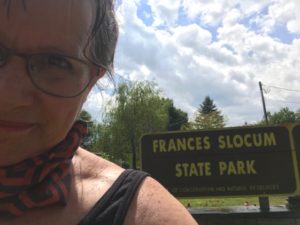
Laurie McCants co-founded the Bloomsburg Theatre Ensemble (BTE) in 1978. BTE was named the “2016 Outstanding Theatre” by the National Theatre Conference. In 2010, Laurie was named an “Actor of Distinguished Achievement” through a Theatre Communications Group/Fox Foundation Resident Actor Fellowship. She was composer Julia Wolfe’s “coal region consultant” for the 2015 Pulitzer Prize winner, ANTHRACITE FIELDS. Her solo show INDUSTRIOUS ANGELS was created and performed at the Ko Festival of Performance. As a Baron Artist Fellow with the American Antiquarian Society, she is continuing research toward her new solo show about white captive child/Miami Indian elder Frances Slocum/Mahkoonsahkwa.

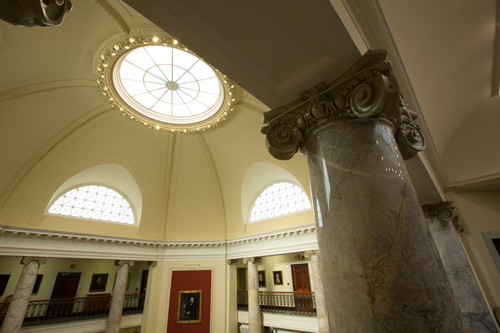
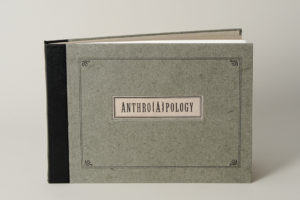
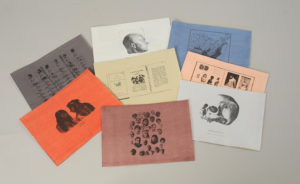
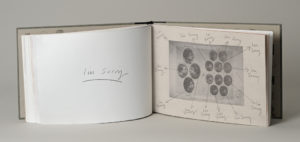
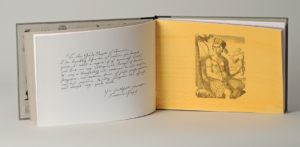
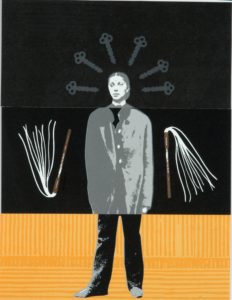
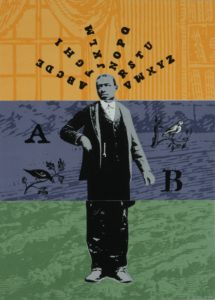
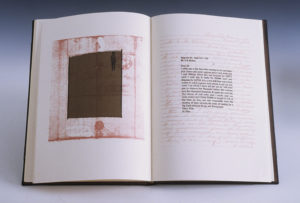
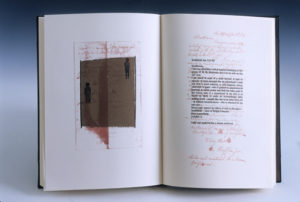
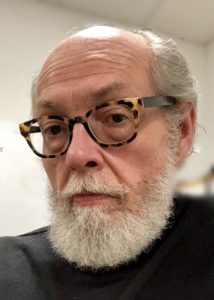
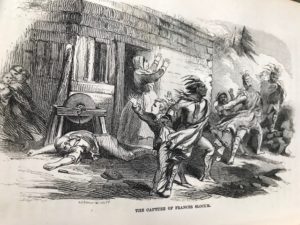
Wonderful! So great to read about all the other artists’ work! Thanks, AAS, for providing the haven.
P.S. Yes, Jeffrey Hatcher, theatre does indeed save lives. And communities. Bloomsburg Theatre Ensemble, founded 42 years ago, can truly claim that our presence in our town in rural Pennsylvania has been vital to its survival and pride. (And I’m happy to say that we produced your play, THE TURN OF THE SCREW, back in 1999!).